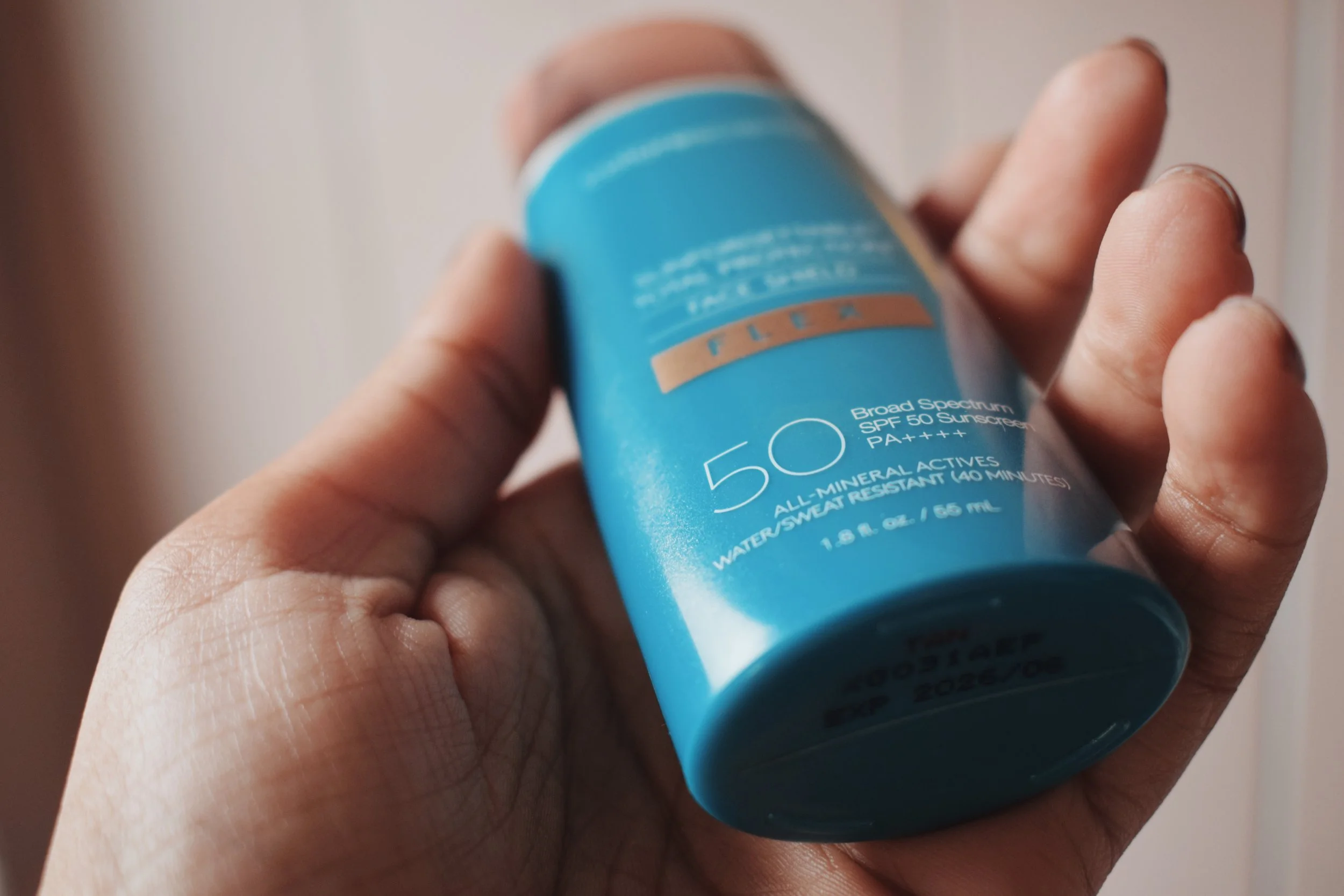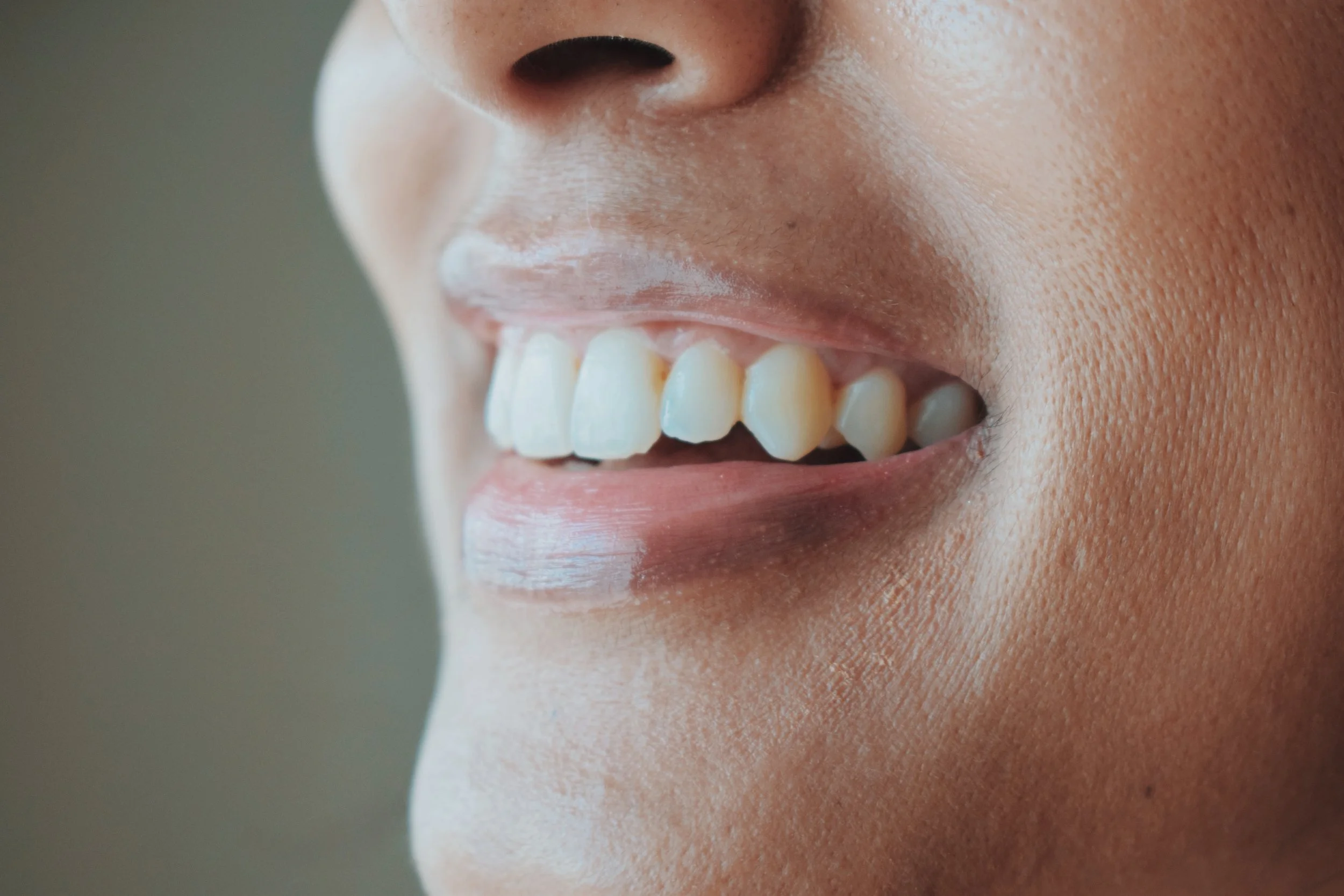Why I Switched to a Tinted Mineral Sunscreen (as a Brown Girl with Oily, Acne-Prone Skin)
Brown skin, acne, and dark spots? A tinted mineral sunscreen might be a better choice than chemical ones. Find out why, and what I recommend.
Summer is well and truly upon us! And with it comes the annual scramble to find a sunscreen that lets us enjoy the sunshine, look great while doing it, and maybe, just maybe, not compromise our skin in the process.
Ask any brown-skinned person what the trickiest skincare product to find is, and chances are they’ll say sunscreen. I’ll be the first to admit I caused untold skin damage in my 20s simply because I couldn’t find a sunscreen that wasn’t greasy, pore-clogging, or leave a ghostly white cast. And the irony is that melanin-rich skin like ours is more prone to hyperpigmentation—and arguably needs more sun protection, not less.
For years, I used chemical sunscreens (influenced heavily by lightweight Korean formulas) because they blended well and sat nicely under makeup. Nothing wrong with that. But recently, I switched to a tinted mineral sunscreen, and my skin has never been happier. Here’s why.
First, a Quick Breakdown: Chemical vs Mineral Sunscreen
OK, I know the words “chemical” and “mineral” might be confusing (or mean nothing at all to you), so let’s break this down in the simplest way possible.
Chemical Sunscreens (a.k.a. Organic Sunscreens)
These work by absorbing UV rays and converting them into heat. If you see ingredients like avobenzone, octinoxate, and oxybenzone on the ingredients list, you’ve got yourself a chemical sunscreen. The advantages of chemical sunscreens are that they tend to be lightweight and cosmetically elegant, and usually leave no white cast.
Mineral Sunscreens (a.k.a. Physical Sunscreens)
These are meant to sit on the surface of the skin and physically block or reflect UV rays (although many of them now use nanoparticles which probably do absorb to a certain extent). The main ingredients in mineral sunscreens tend to be either zinc oxide and/or titanium dioxide. They're known for being gentler, especially for sensitive or acne-prone skin—but unfortunately, also for leaving a white cast on deeper skin tones like mine.
Why I Switched From a Chemical Sunscreen to a Tinted Mineral Sunscreen
Let me be the first to say, chemical sunscreens are not bad! They’re lightweight, elegant, and offer good broad spectrum protection. Heck, I still find myself reaching for a chemical sunscreen if I’m going to wear a full face of makeup or need something more water resistant.
But there were a few things that led me to believe that tinted mineral sunscreens were a better option for daily wear. Here’s why:
1. Tinted Mineral Sunscreens Give You Added Protection Against Hyperpigmentation
We all know that UV radiation = bad for the skin. But did you know, there’s another kind of light—visible light—which can also worsen pigmentation? If you’ve ever dealt with dark marks or melasma while religiously applying a sunscreen, you may have been a victim of the side effects of visible light. Now, here's the kicker: tinted mineral sunscreens with iron oxides have been found to offer added protection against visible light, which most regular sunscreens don't.
This Harvard Health article notes that broad-spectrum, non-tinted sunscreens that contain UVA and UVB filters are not designed to block visible light. To block visible light, a sunscreen must be visible on skin.
For me, this was a game-changer. My tinted mineral sunscreen acts like a visible layer of protection that not only shields me from UV rays but also helps prevent the formation of dark spots on the skin.
2. They’re the Happy Medium I Was Looking For
They offer the benefits of traditional mineral sunscreens, but with better cosmetic wear and tone-evening properties. For people who feel caught between wanting the skin-calming benefits of zinc oxide and the ease-of-use of chemical sunscreens, tinted mineral formulas can be the best of both worlds.
Now, I’m not saying they’re perfect—the shade ranges from most brands are still frustratingly limited—but when you find one that works for your skin tone, it can simplify your routine, provide extra coverage, and support both acne-prone and pigmentation-prone skin.
3. My Acne-Prone Skin Prefers Simpler Formulas
Chemical filters can sometimes irritate sensitive or acne-prone skin. Not always, and not for everyone—but in my case, I noticed fewer breakouts and less inflammation after switching to a mineral formula. Zinc oxide, in particular, has mild anti-inflammatory properties, which is great if you're dealing with active acne.
4. It Doubles as Light Coverage
As someone who likes to keep my morning routine minimal, tinted mineral sunscreen does double duty. It evens out my skin tone just enough to make me feel a little more put-together without needing foundation. That’s one less layer on my face—and one less thing that could potentially clog my pores.
You Don’t Need Just One Sunscreen for Everything
I know, I know, as a preacher of skinimalism, I’m just as shocked as you are to be recommending the purchase of more products. But for sunscreen, I make an exception. Just like you wouldn’t wear the same shoes to the gym, the office, and a wedding, your sunscreen can change depending on your day.
Personally, I now rotate between:
A tinted mineral sunscreen for most days (great for work from home Zoom calls, errands, casual brunches, or no-makeup days).
My personal fave right now is the Colorescience Sunforgettable® Total Protection® Face Shield Flex SPF 50
A long-wearing sweat-resistant chemical sunscreen for outdoor workouts, hikes, beach days, gym days or just any other day when I know I’m going to have prolonged—and potentially, sweaty—sun exposure.
La Roche Posay’s Anthelios range of sunscreens is my recommendation for the outdoors. There are a lot of options here, so find the one that suits your skin best. And don’t forget your body!
A chemical or hybrid sunscreen with a smooth finish for the (rare) occasions I wear a full face of makeup.
The Paula’s Choice Youth-Extending Daily Hydrating Fluid SPF 50 is a super lightweight formula that gives the perfect satiny smooth finish that sits amazingly under makeup. SKIN1004’s Madagascar Centella, Hyalu-Cica Water-Fit Sun Serum SPF 50 is a Kbeauty fave that will give you the most beautiful dewy glow under makeup.
Final Thoughts: Find What Works for You
It’s a cliche for a reason, but the best sunscreen truly is the one you’ll actually wear every day. The one I’m loving for my everyday wear is a tinted mineral sunscreen, and it certainly helps that it offers so many additional benefits. But that doesn’t mean it’s the only answer.
Sunscreen isn’t one-size-fits-all—and it shouldn’t be. Pay attention to how your skin reacts, consider your top priorities (tone, texture, protection, wearability), and don’t be afraid to switch things up as your skin changes.
About The Skinimalist
Hi, I’m Mal, a 30-something recovering skincare addict, and this is my blog. A space where I attempt to de-influence you from chasing trends and buying more skincare products you may not need.







Struggling with hyperpigmentation? Let’s break down the most effective brightening ingredients—like vitamin C, azelaic acid, glutathione, and more—plus tips on choosing the right ones for your skin